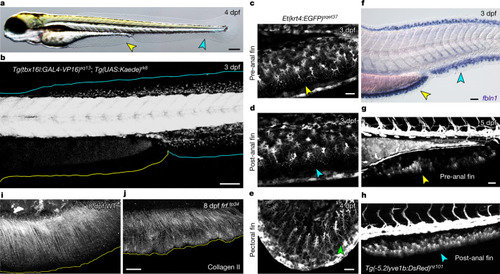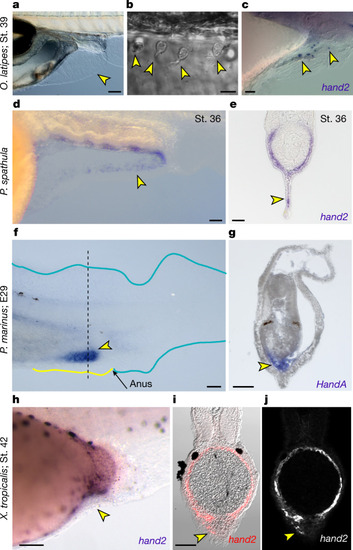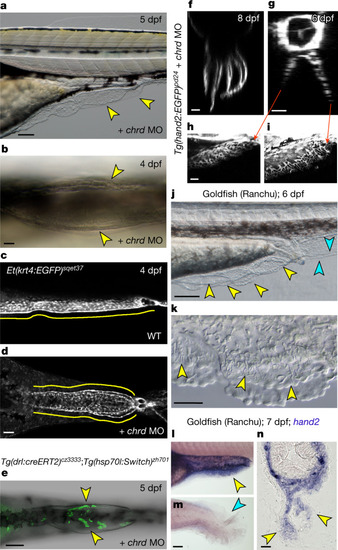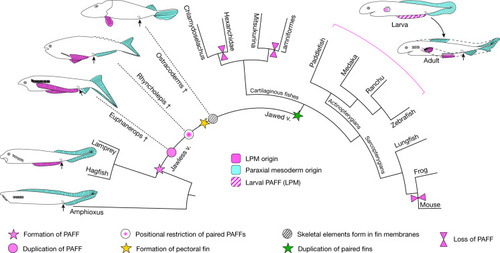- Title
-
A median fin derived from the lateral plate mesoderm and the origin of paired fins
- Authors
- Tzung, K.W., Lalonde, R.L., Prummel, K.D., Mahabaleshwar, H., Moran, H.R., Stundl, J., Cass, A.N., Le, Y., Lea, R., Dorey, K., Tomecka, M.J., Zhang, C., Brombacher, E.C., White, W.T., Roehl, H.H., Tulenko, F.J., Winkler, C., Currie, P.D., Amaya, E., Davis, M.C., Bronner, M.E., Mosimann, C., Carney, T.J.
- Source
- Full text @ Nature
|
A non-PM-derived median fin fold. |
|
The PAFF is an LPM-derived median fin fold. |
|
PAFF mesenchyme expression of |
|
Duplication of the PAFF into paired fin folds. |
|
Hypothesis of the elaboration of the PAFF to paired fins.p>Simplified evolutionary scenario of vertebrates showing the presence of a PAFF and subsequent modifications leading to paired fins. Dashed lines and dagger symbols indicate extinct lineages, and solid lines indicate extant lineages. PM-derived fins and fin folds are in cyan, while LPM-derived fins are in pink. Larval PAFF is hatched. Black arrows indicate the position of the anus. |





